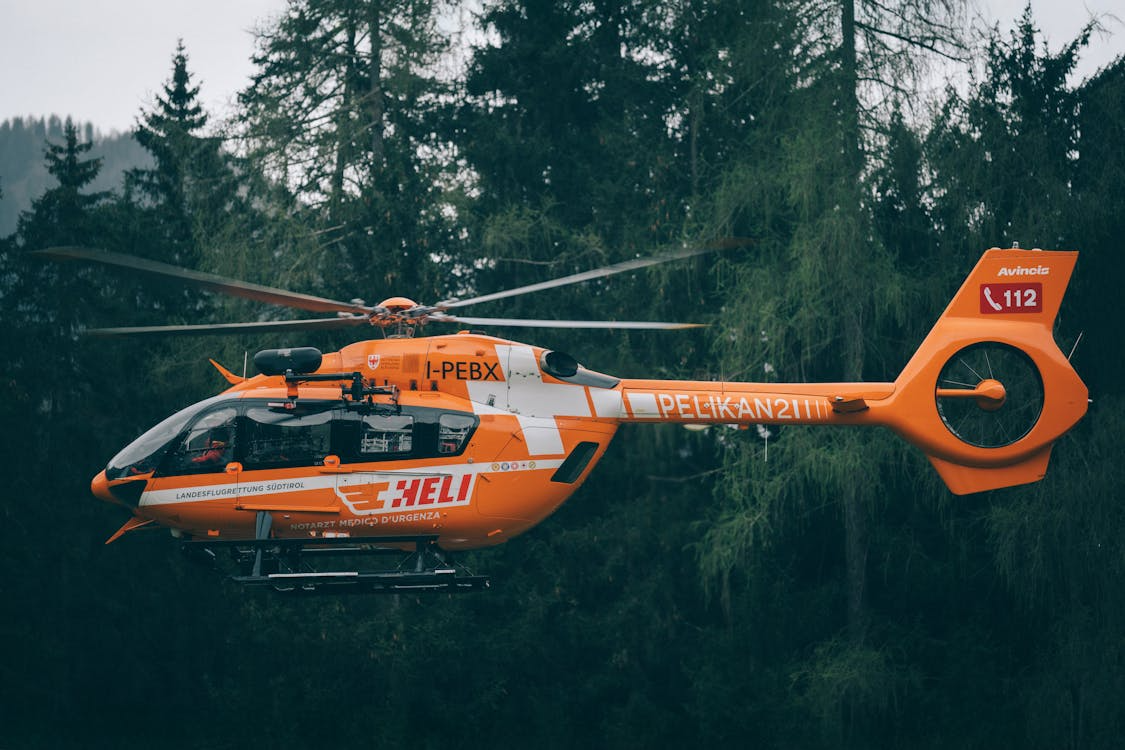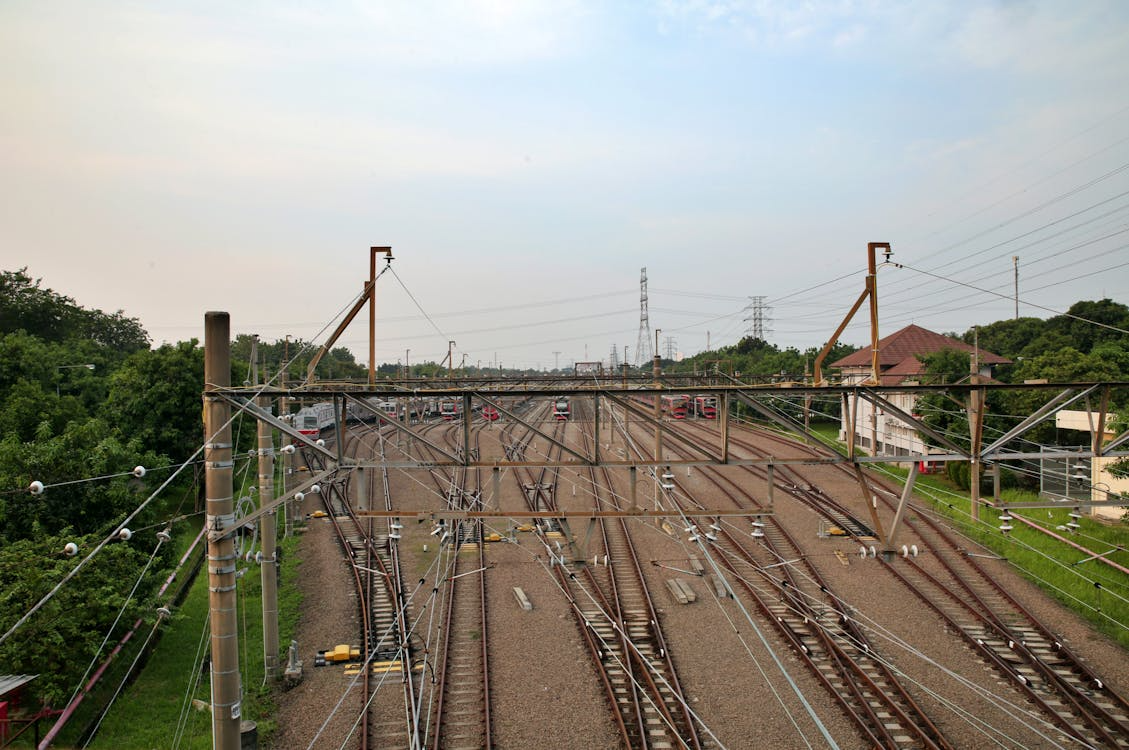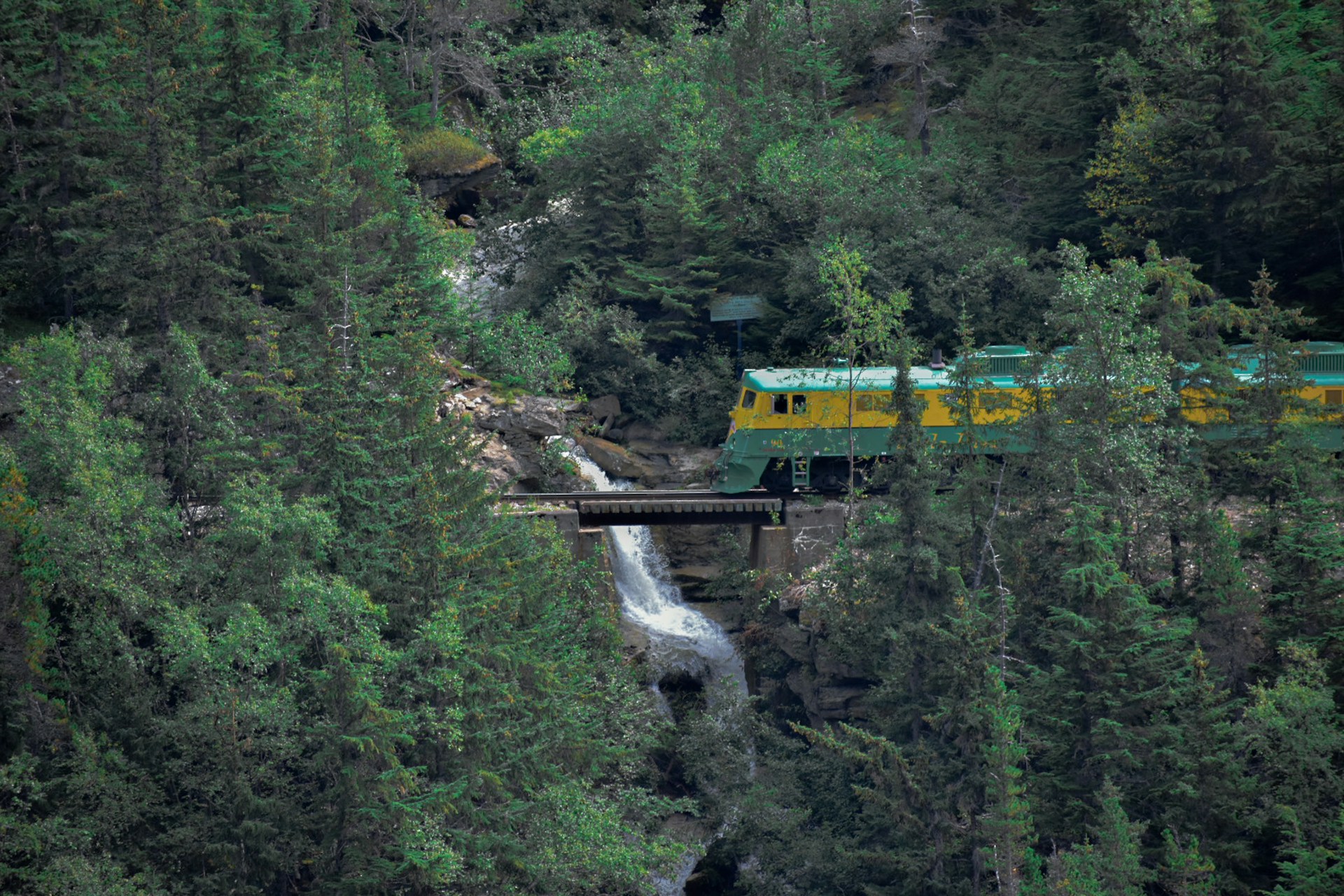Railroads revolutionized ground transportation and remain the backbone of cargo and passenger transport in the United States, moving over 1.6 billion tons of freight across the country each year. But keeping this vast infrastructure network safe and reliable is no simple task, and hazards like vegetation overgrowth and hidden faults can disrupt service and cause costly delays.
While helicopter services are frequently associated with heavy-lift construction and medical evacuations, they also play a critical – and often overlooked – role in railroad inspections and maintenance. Whether trimming unruly branches or monitoring derailments from the skies, helicopters have become an essential partner for railroad companies.
Let’s explore the various applications of aerial support in railroad inspections and maintenance, from vegetation management and snow removal to debris clearing after large-scale disasters. We’ll also highlight the cutting-edge technology that supports these services and cover the benefits of using helicopters over ground-based tools and equipment.
Applications of Helicopter Services in Railroad Inspections and Maintenance
Modern railroad companies are increasingly turning to helicopter services to enhance their operational capabilities. That’s because helicopters offer significant advantages in safety, efficiency, and accessibility when compared to ground-based methods.
Here’s a quick overview of how helicopter services support track inspections and maintenance, vegetation management, snow and ice removal, and emergency response efforts.
Track Inspections and Maintenance
Routine track, overhead wire, and bridge inspections lay the foundation for railroad safety. But walking miles of track or surveying elevated bridges on foot can be slow, dangerous, and impractical. Helicopters provide a more efficient alternative by covering large stretches of railway in a single flight, using cutting-edge technology to survey critical infrastructure from above.
Helicopter-assisted track inspections enable railroad teams to:
- Monitor Infrastructure Health: Helicopters use aerial imagery and sensors to track wear, corrosion, or misalignment more efficiently.
- Identify Hazards: Teams can detect and address faults before they pose a risk to operations.
- Quickly Remove Debris: Helicopters allow crews to clear obstacles from tracks and surrounding areas without the delays or dangers of on-foot removal.
- Optimize Resource Management: Aerial inspections help railroad operators better allocate personnel, equipment, and inspection schedules.
- Respond Rapidly to Emergencies: Helicopters can reach damaged or obstructed areas faster than ground-based crews.
Essentially, faster, safer, and more comprehensive aerial assessments minimize downtime and improve overall reliability.

Vegetation Management
One of the most pressing challenges railroads face is managing the vegetation that grows along their tracks. Unmanaged, overgrown branches are dangerous for a number of reasons:
- Obstructed Visibility: Overgrown vegetation can make it difficult for train operators and inspectors to see clearly.
- Equipment Damage and Derailment Risk: Branches can strike railcars, damaging costly equipment or causing derailments that endanger passengers and operators.
- Tunneling Effect: Unruly branches from both sides of a track can interlock overhead, creating a tunneling effect that creates hazardous conditions for crews.
- Wildfire and Drainage Issues: Noxious weeds can increase the chance of wildfire spread and prevent the free flow of rainwater.
So, how do helicopters combat these issues? These versatile rotary aircraft can be equipped with suspended saws to provide a safer, more efficient solution for clearing branches – especially in areas that are largely inaccessible via ground vehicle or foot.
Here’s how it works: a helicopter pilot lowers a 90-foot arm fitted with spinning circular saws on each side. These blades trim back branches to the necessary distance, depending on the size of the tree. This process reduces the risk posed by high-voltage power lines and keeps rail corridors clear for safe and reliable operations.
Snow and Ice Removal
Winter weather can bring about snow and ice capable of shutting down critical sections of railways. In icy conditions, it’s often difficult for ground-based snow removal teams to reach remote or elevated areas where trains operate, and reduced access can cause delays across the entire network.
Here’s the good news: helicopters are capable of operating in cold weather due to their advanced anti-icing systems, intensive pre-flight planning requirements, and trained pilots and crews. Their ability to overcome weather-related challenges, access remote areas quickly, hover in place, and carry heavy, specialized equipment make them the perfect tool for quick and efficient snow removal.

Let’s walk through three powerful and efficient methods of helicopter snow removal:
- Booms: Specialized booms can shoot high-pressure water at railroad infrastructure to wash it clean of ice and snow.
- De-Icing Spray: Helicopters can be outfitted with high-pressure tanks and pumps that spray hot water or special de-icing fluids onto railroad tracks.
- Rotor Wash: This is the strong downward airflow generated by a helicopter’s main rotor blades as they generate lift. Rotor wash is capable of dislodging significant amounts of ice and snow from tracks, switches, and bridges without causing damage.
These helicopter-based methods are not just faster than ground-based snow removal; they’re also safer for crews who might otherwise be exposed to dangerous winter weather conditions.
Emergency Response
When emergencies occur, helicopters offer railroad operators rapid-response capabilities that ground vehicles cannot match. Their ability to reach remote or obstructed areas quickly ensures critical teams can survey and address derailments, collisions, or hazardous material incidents without delay.
There are several ways helicopters enable emergency response efforts and logistics.
- Rapid Access and Assessment: Aerial views allow managers to immediately gauge the scale of damage, monitor hazardous conditions, and coordinate resources. Real-time video and communications keep ground teams informed with the latest information.
- Medical Evacuation and Rescue: Helicopters can transport critically injured individuals to hospitals faster than ground ambulances, deliver medical teams and supplies directly to accident sites, and use hoists or sling systems to extract victims or lower responders in areas without ground access.
- Logistics and Recovery Support: Helicopters are capable of lifting thousands of pounds. That means they can move heavy equipment, clear debris, or lift damaged railcars from inaccessible areas. Their versatility reduces downtime, improves safety for rescue personnel, and accelerates the restoration of service.
By integrating helicopters into emergency response plans, rail operators can reduce risk, improve outcomes, and restore service more quickly after critical incidents.
The Technology Behind Helicopter Services and Railroad Maintenance
Modern helicopters can be equipped with advanced technology that vastly improves the accuracy and efficiency of railroad inspections and maintenance. Let’s explore three key tools that provide vital data for vegetation management, infrastructure planning, safety improvements, emergency response efforts, and more.
High-Resolution Cameras
Aerial imagery can provide detailed visual records of track conditions, vegetation encroachment, bridge structures, and more. Infrastructure managers use these photos to guide vegetation management and make decisions about the maintenance of overhead line equipment.
This high-resolution footage enables inspectors to identify wear, corrosion, or misalignment without needing to send crews directly into hazardous areas, saving both time and labor costs.
LiDAR
Light Detection and Ranging (LiDAR) technology is one of the most accurate and precise solutions for creating detailed maps of railroads and the surrounding environment.
The process works like this:
- Once mounted upon a helicopter, the LiDAR device emits laser pulses, measuring how long it takes for the light to bounce back after hitting an object.
- The laser pulses capture data about the shape and structure of the surrounding terrain.
- These measurements are processed to create 3D maps of railroads, landscapes, vegetation, and soil.
- These maps provide precise data on track alignment, surrounding terrain, and potential weak spots to support proactive maintenance.
Thermal Imaging
Thermal imaging uses heat-sensitive sensors to detect variations in temperature that are invisible to the naked eye. By capturing these differences, it can reveal hidden structural issues, electrical faults, or overheating before they cause failures.
Thermal imaging enables maintenance teams to address problems before they become safety hazards that cause service interruptions. Thermal data also helps rail operators prioritize repairs and allocate resources more effectively, improving long-term reliability and safety across the network.
Six Benefits of Helicopter-Assisted Railroad Maintenance
There are six key reasons why railroads are increasingly incorporating helicopter services into their assessment and maintenance strategies:
- More Efficient Coverage: Helicopters enable expansive regions to be inspected, cleared, or repaired in a fraction of the time.
- Increased Accessibility: Elevated, rugged, and remote areas that are difficult (or even impossible) to reach on foot or by ground vehicle can be easily accessed by air.
- Prevention of Issues: Helicopters equipped with advanced technology are capable of identifying even the smallest faults. Early detection of these hazards prevents small problems from escalating into large-scale safety issues, costly accidents, and delays.
- Minimal Delays: Faster inspections, vegetation clearing, snow removal, and emergency response mean fewer service interruptions.
- Reduced Costs: While helicopter services can be costly, their boosted speed and efficiency often lead to reduced project timelines and budgets. This saves money in the long run.
- Enhanced Safety: Assessments and maintenance performed by air allow crews to spend less time in dangerous terrain, subjected to inclement weather conditions, and near active tracks. This vastly decreases the risk of accidents and injuries.

Helicopter Express: A Reliable Partner for Railroad Inspections and Maintenance
Helicopter Express has built a reputation for providing safe and efficient helicopter services across a variety of industries, from power line inspections to railroad support. Whether your project requires vegetation management, snow removal, aerial inspections, or emergency response, our elite pilots and state-of-the-art fleet are ready to assist.
We offer over three decades of experience, a collaborative environment, and a customer-first approach that has earned us the trust of construction firms, utility companies, and government agencies across the U.S. and abroad.
If you’re looking for a reliable partner to support your railroad inspection and maintenance needs, contact us to discuss your operation today. Learn how our skilled team and advanced equipment can save you time, money, and stress while keeping your rail operations safe and efficient.

